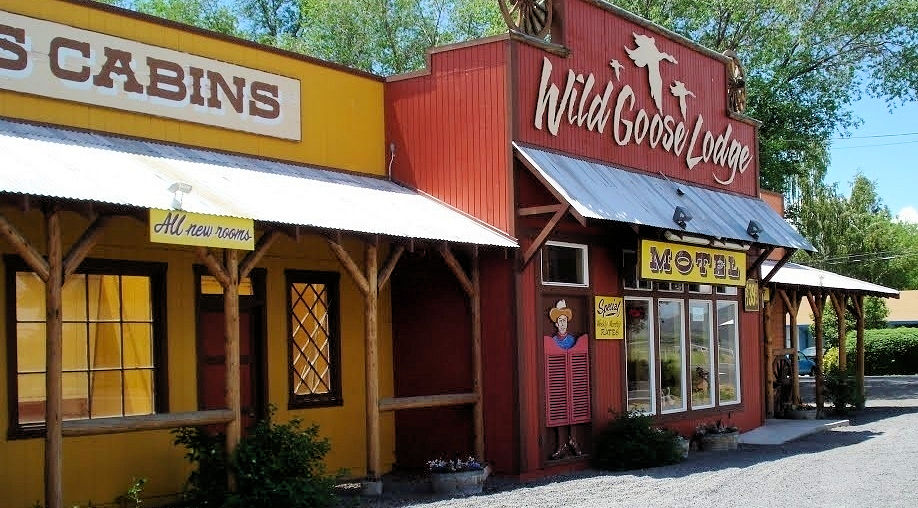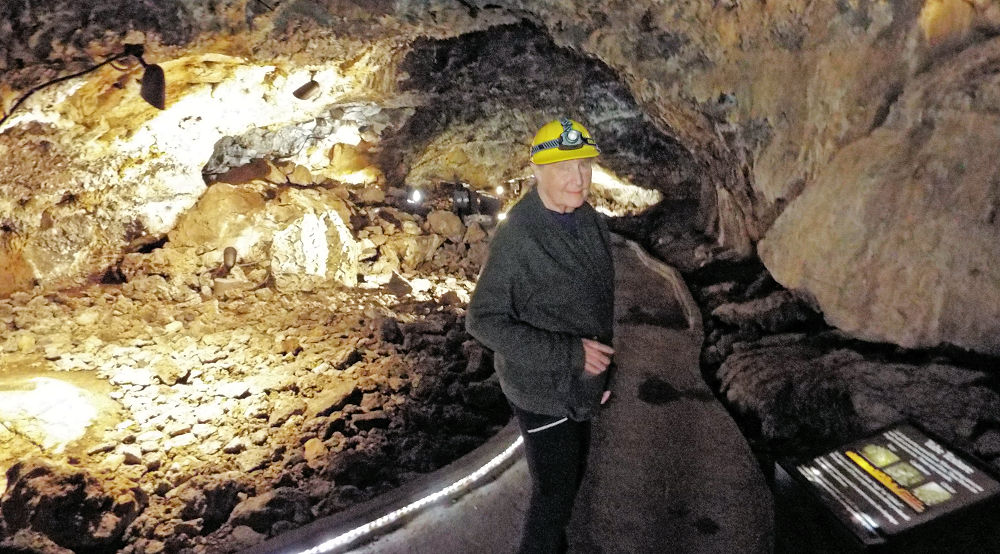On a recent trip through Oregon, my wife and I stopped in a very small town named Merrill, which is the closest town to the Lava Beds National Monument in northern California – a must-see part of the country managed by US National Park Service. We spent the night in Merrill at a tiny motel called the Wild Goose Lodge, with 13 rooms and two larger “cabins.”

The Wild Goose Lodge in Merrill, Oregon. Image credit: Wild Goose Lodge
This roadside motel was originally built back in the 1940s, but it has been completely redone and updated for the 21st century. In fact, this little, out-of-the-way motel bristles with more electronics than most of the other hotels and motels I’ve patronized, and that’s saying a lot. Take a look at the image below.

Look carefully and you’ll see a Wi-Fi access point and two wireless security cameras installed along the eave and façade above the guest rooms at the Wild Goose Lodge. Image credit: Wild Goose Lodge
The first things you might notice in the above image are the knotty pine entry doors to the guest rooms. The rustic, knotty-pine theme is part of this restored and updated motel’s ambiance and is carried throughout the guest room and the hotel’s lobby. If you look towards the top of the image, you’ll see the lodge’s Wild Goose theme logo, and, if you look closely, you’ll see a Wi-Fi access point bolted to the façade as well. That explains why the Wi-Fi was so good at this facility. There’s another reason for the high-tech support infused into this properly. The owner, Mark, spent more than 20 years as a software engineer in Boise, Idaho before buying the motel and fixing it up.
The day before your visit to the Wild Goose Lodge, you’ll receive an email detailing your room number and the 4-digit PIN you’ll need to enter the room. It will be a personalized, easy-to-remember PIN, for you alone. Given that the lodge is already expecting you, there’s no need to check in at the front desk. You simply park your car in front of the room, walk up to your door, and enter your PIN on the door handle’s integrated keypad. You won’t even need your mobile phone to enter your room. I’m fairly certain that the email you receive is automated and that the door’s access PIN is wirelessly updated shortly before you arrive.
Upon entering the room, you’ll find a small module attached to the entry door’s frame. It’s a wireless device used for checking in and out of the lodge. When you enter, there’s a small white bar on the side of the module that says, “Checked Out.” Flip the bar up on its pivot and you’ll see “Checked In.” The module then reports to the front desk that you’ve checked in. When you’re ready to leave at the end of your stay, flip the bar down, exit the room, and drive away. Again, there’s no need to check out at the front desk and there’s no key to return. The owner has streamlined this small motel so that it needs minimal human intervention except for cleaning. And yes, the room was clean and tidy. It was also small, although large enough to comfortably fit a queen bed.
Frankly, I was fascinated by the small device bolted to the motel room’s door frame. I’d never seen anything like it. The module was obviously wireless and powered by a battery. It had a Yolink logo on it. I’d never heard of the company, so I Googled the wireless module using the lodge’s high-speed Internet connection as soon as I had the chance. The module is a Yolink Door Sensor, which costs $152.50 for a 10-pack. That’s a mere $15.25 per wireless sensor. Yolink’s products use the LoRaRAN wireless protocol, which is a low-power, chirp-based, spread-spectrum modulation technique with a quarter-mile range. That’s plenty of range to reach the motel’s front desk. The LoRa sensors report to a Yolink hub, which translates the LoRaWAN networking protocol into Wi-Fi or hardwired Ethernet. A Yolink hub currently costs $23.59. This is some pretty amazing wireless technology at rock-bottom prices. Mark, the lodge’s owner, told me that he selected this Yolink system to avoid the monthly costs associated with a cloud subscription. I suspect he was attracted by the low acquisition cost too.
However, the Wild Goose Lodge’s owner had applied a bit of his own ingenuity to these Yolink door sensors. The sensors work with a bar magnet, like most door sensors I’ve seen. Normally, you attach the sensor to the door frame and glue the magnet to the door. When the door is closed, the magnet sits next to the sensor and activates it. But the Wild Goose Lodge isn’t monitoring the open/closed status of the door. It wants to know when you check in and out. So, the owner has pinned the bar magnet to the sensor. The small pin serves as a pivot. When you pivot the bar up to check in, the sensor sees the “door” as closed. When you pivot the bar down, the sensor sees the “door” as open, signaling that you’ve checked out. Here’s a photo to clarify the explanation.

A Yolink LoRaWAN Door Sensor, attached to the door frame on the left in this photo, serves as a check-in-check-out device at the Wild Goose Lodge. The sensor is shown in the “checked-in” position. Flip the arm of the device down to check out. The QR code on the right gives you the Wi-Fi password for the room. Image credit: Steve Leibson
The next morning, my wife and I packed up, loaded the car, flipped the sensor’s bar down to check out, and drove about 40 minutes to the Lava Beds National Monument. Here’s a photo of my wife Pat in one of the monument’s lava tubes.

My wife Pat in a lava tube at the Lava Beds National Monument in California. Hard hats are mandatory. Image credit: Steve Leibson
Our one-night stay at the Wild Goose Lodge suggests a few conclusions. First, there’s a lot of electronic technology out there these days, including wireless technology, that’s just waiting for someone to use it ingeniously. Second, you don’t know where you’ll stumble onto the next slick application of this technology. I certainly wasn’t expecting to find it in a 15-room roadside motel in Merrill, Oregon. Finally, you really ought to go see the Lava Beds National Monument. It’s worth the drive.




